Verdigris
Preparation and Growing
Table of Contents
Date and Time:
2016.09.12, 2:00pm
Location: Making and Knowing Lab
Subject: Receiving materials
- Discussed verdigris assignment and searched "verdigris," copper, and vinegar on Chemwatch
- At the end of class, we each received a glass jar, twine, and sheet of copper to take home to grow our verdigris
Name: Joslyn DeVinney
Date and Time:
2016.09.14, 9:30pm
Location: my apartment, 120th and Amsterdam, 4th Floor
Subject: Setting up my verdigris growing experiment
- First, I looked up verdigris recipes in Mary P. Merrifield's Original Treatises Dating from the XIIth to XVIIIth Centuries on the Arts of Painting (London: John Murray, 1849) using the links provided on the assignment direction document
- I decided to try Merrifield's recipe on pg. 118:
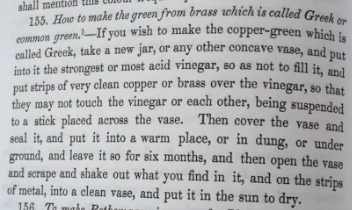
- Materials and Ingredients:
- "new jar"--used the jar given to me in class. Does the recipe ask for a "new" jar for cleanliness or some other reason? There is no indication of jar size.
- "strongest or most acidic vinegar"-- In class, Professor Smith had mentioned that apple cider vinegar with "the mother" was a fine choice for vinegar because it is high in acetic acid, so I used Bragg Organic Raw Unfiltered Apple Cider Vinegar.
- "strips of very clean copper or brass"-- I used the copper I was given in class, and cut it into strips (this was probably not necessary since the piece I was given was not very large to begin with). I washed my hands and tried not to touch the copper to keep it as clean as possible.
- "a stick"--I used the twine I was given since its purpose is to suspend the copper
- lid--for sealing the jar
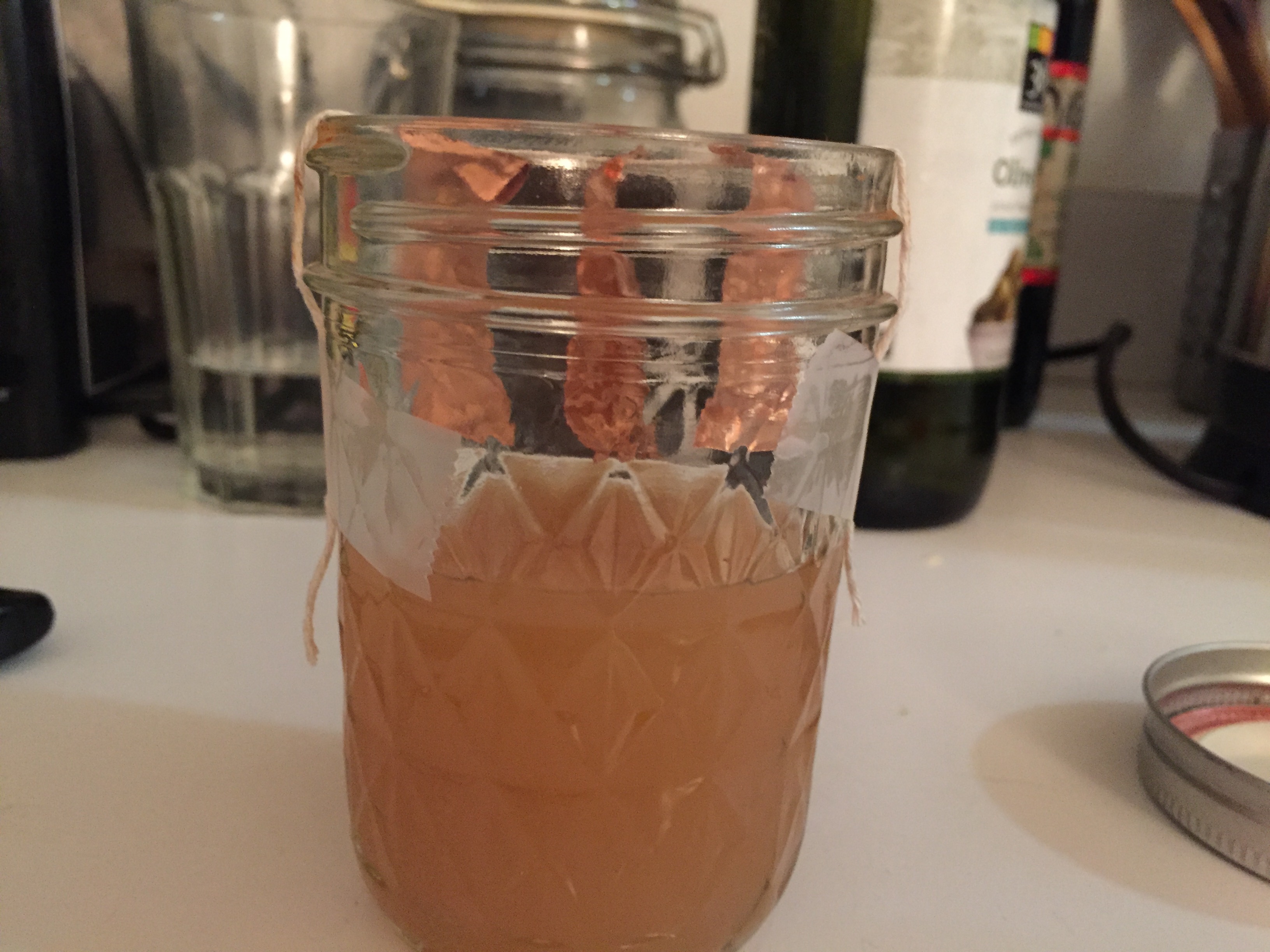
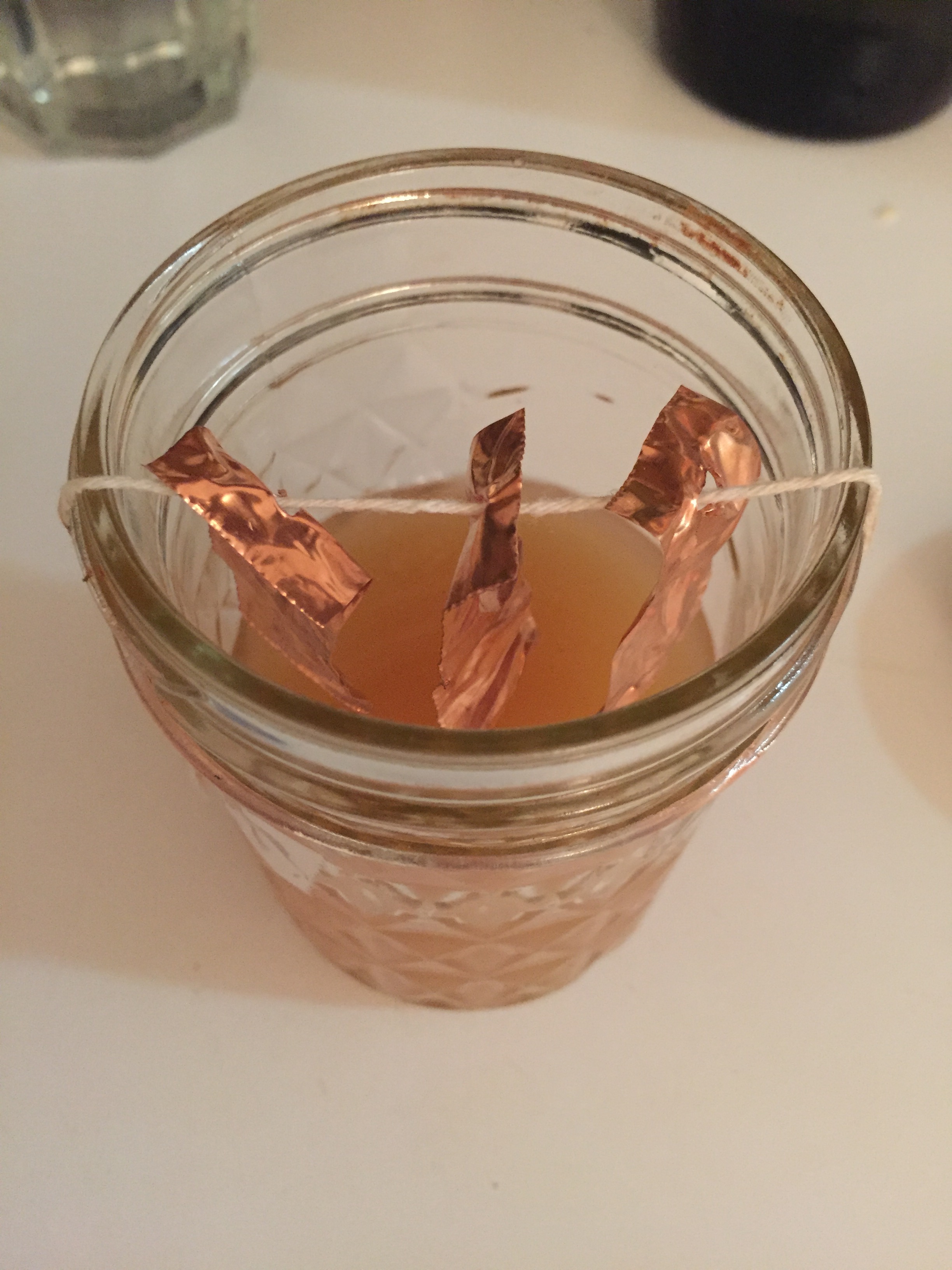
- Method:
- "so as not to fill it"-- the only indication of how much vinegar to use; I filled the jar halfway so that it would not touch the copper strips and hung the copper strips so that they did not touch each other, as indicated by the recipe
- "suspended to a stick"--I put holes in my copper and pushed the twine through the strips; would the author of this recipe have stuck the strips "to" a stick somehow? Does it matter that I pierced the copper?
- "cover the vase and seal it"--I taped the twine to the sides of the jar, and screwed the lid on tightly to seal it. How would a jar/vase have been sealed in the nineteenth century? Placing the jar in dung would presumably also keep more air out as well as warming the contents.
- "put it into a warm place, or in dung, or under ground, and leave it for six months"--I did not want to deal with dung or digging under ground so I put the jar on a windowsill (and hoped for sun to warm it). The recipe from the Mappae Clavicula and others on this blog said to leave the copper for 14 days, so I was hopeful I would get results with the over two weeks we had for our experiment.
- Theophilus's recipe on the above-mentioned blog calls for moistening the copper with vinegar. Since the recipe I followed says not to let the vinegar touch the copper sheets, I didn't do this. But then my boyfriend knocked into the jar during the second week on the sill and the copper dipped into the vinegar a bit. Darker crystals appeared on the parts of the copper that touched the vinegar. Perhaps the recipes that call for the copper to be moistened with vinegar result in a darker verdigris.
- After 19 days, I removed the copper and twine from the jar and put them into a plastic Ziploc bag to take to class
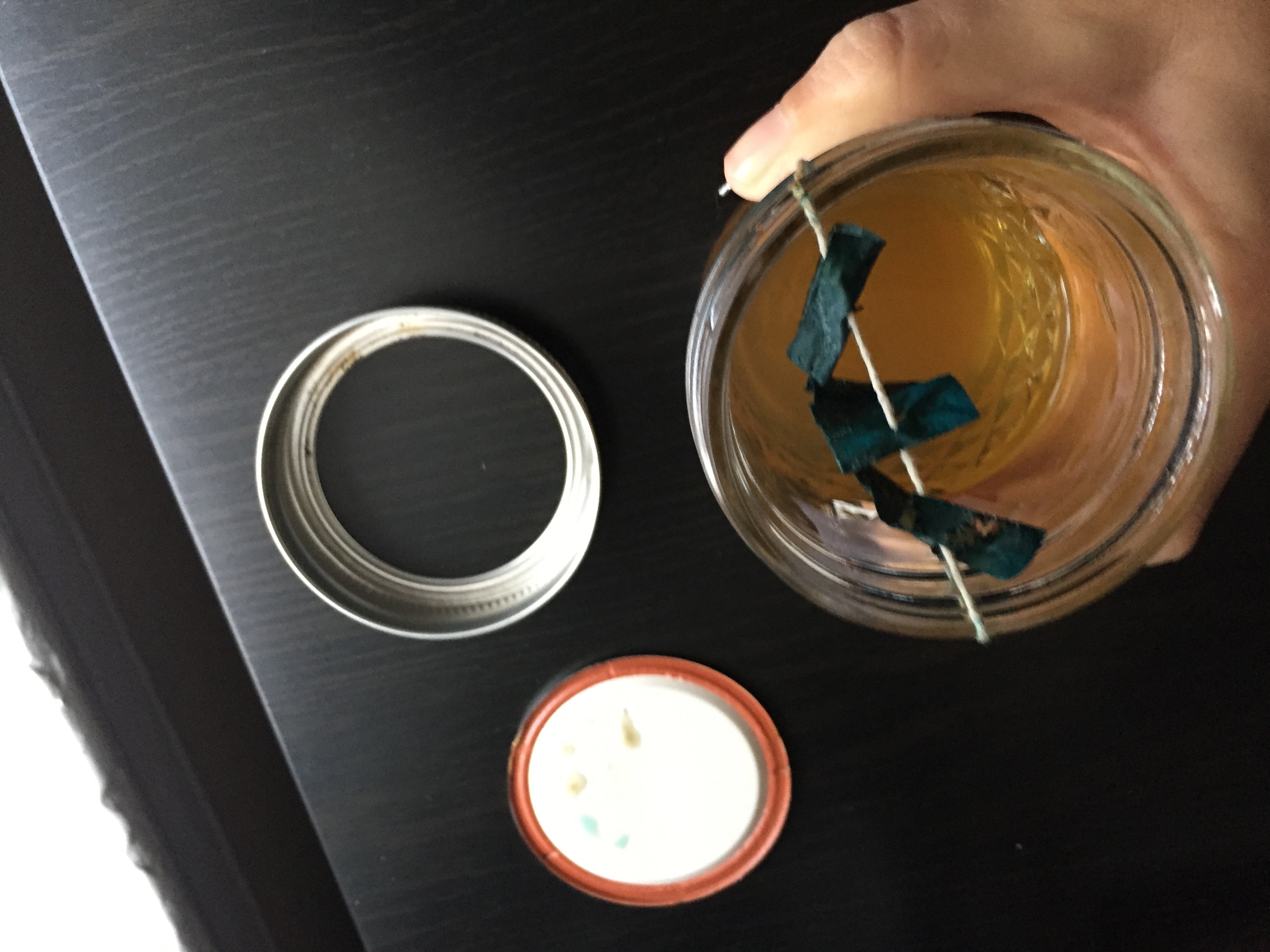
Despite getting slightly wet with vinegar (and despite the weather not being terribly sunny), the copper turned a strong green color. When I opened the jar, the vinegar was much more pungent than when I first poured it in.
Painting Out
Name: Joslyn DeVinneyDate and Time:
2016.10.03, 11:30am-1:00pm
Location: Making and Knowing Lab
Subject: Painting out verdigris
- Before class, I researched verdigris on the sites given on the syllabus under "On Verdigris: Required Reading:"
- Pigments Through the Ages: veridgris is moderately toxic (inhalation); verdigris' degradation process: fugitive and reacts upon contact with hydrogen sulfides, degrades parchment and cellulosic materials. In Merriam-Webster, "cellulose" means "a substance that is the main part of cell walls of plants that is used in making various products (such as paper)."
- The Pigment Glossary: also called "Spanish green," if ground with strong vinegar-->blue-green (distilled verdigris); definition: blue-green pigment formed by action of vapors of vinegar on copper; especially made in wine-growing areas (why found in wine-growing areas explained below in the Cologne database)
- University of Delaware's Technical Art History site: presents analyses of degraded verdigris in 19th century painting
- CAMEO: blue-green pigment; basic copper acetate; manufactured since ancient times
- Cologne Database , Doris Oltrogge's article "The Cologne database for painting materials and reconstructions" available on the Google Drive: in wine-growing areas, verdigris made by putting copper over fermented grapes; discolors in oil painting, fades in watercolors, reacts with paper support
- When I first arrived in class, I removed my copper strips from the bag and placed them on a ceramic plate to dry out. The recipe says to scrape off and set in the sun but, given the time constraints of class, I did not place the powder in the sun once I scrapped it from the strips.
- Photo 1: the various verdigris results in the class (mine is second from bottom)
- While our verdigris dried out, we looked up copper acetate (verdigris) on Chemwatch and determined the main danger was from inhalation of the copper.
- Our PPE for painting out verdigris: rubber gloves, safety glasses, lab coat
- Photos 2 and 3: scraping the verdigris off of the copper stripes with a pallet knife onto a ceramic plate
- Half of the class ground their verdigris with vinegar. I did not.
- Photos 4-12: first trial
- tools/materials: glass muller, linseed oil, plastic pipet, oil brush, powdered verdigris not ground with vinegar
- squeezed two droplets of linseed oil with a plastic pipet onto my verdigris powder
- mixed the oil and powder with the pallet knife and ground the mixture (in a figure eight motion as instructed by Professor Smith) with the glass muller
- after almost ten minutes of grinding and scrapping with the muller and pallet knife, the verdigris remained very grainy. Professor Smith encouraged me to press harder with the muller and helped me grind for a few minutes.
- Photo 13: after more grinding, the pigment painted pretty smoothly onto the poster board (square 1e)
- I repeated steps taken in photos 4-12 with walnut oil (result: photo 13, square 2e); it's difficult to see much difference between the verdigris with walnut oil and that with linseed oil; if anything, the linseed seems to have made a slightly thicker liquid (but this could be due to a any differences in my mixing technique or quantities of the verdigris used since I did not measure the powder for each trial).
1
 2
2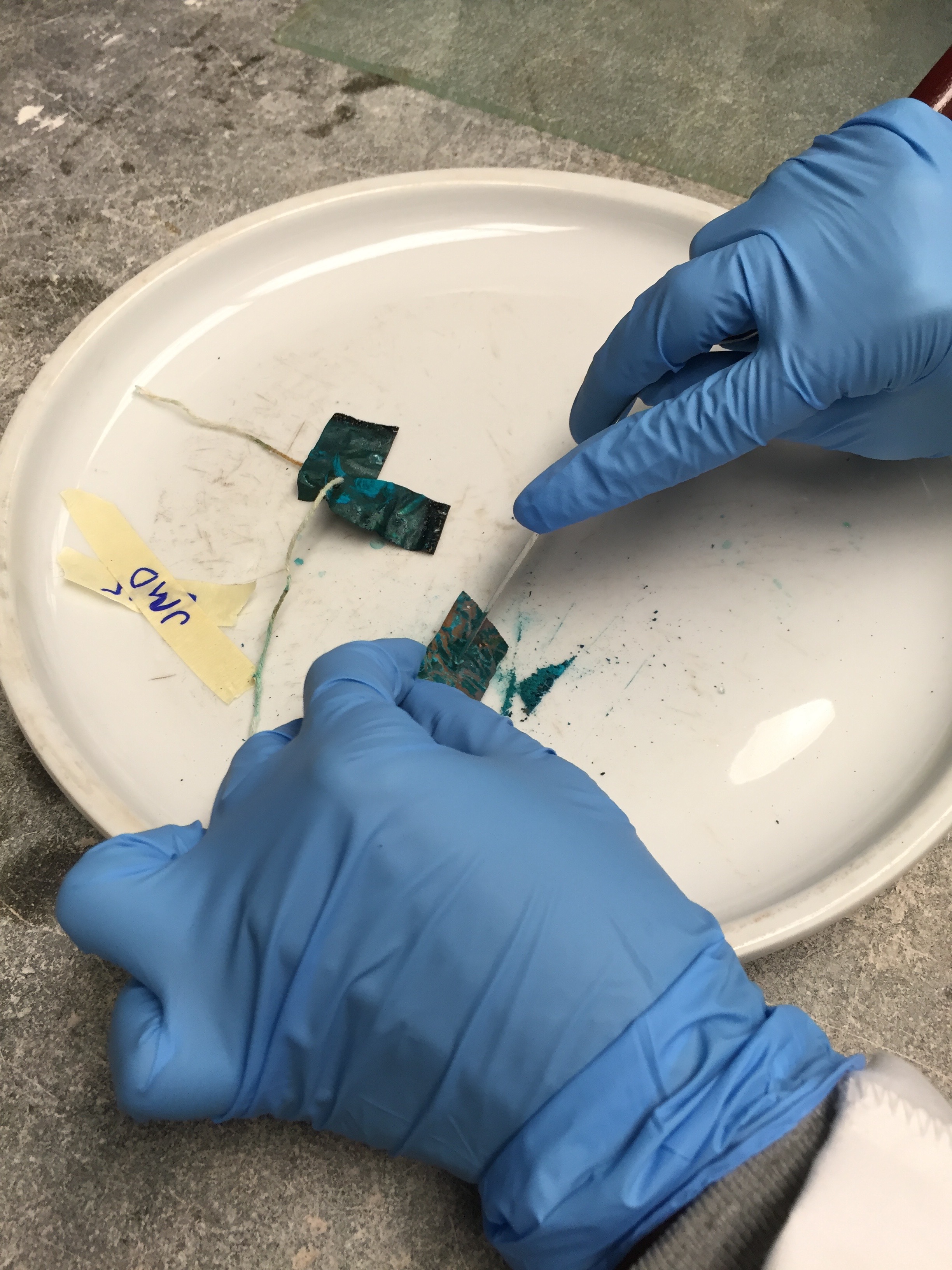 3
3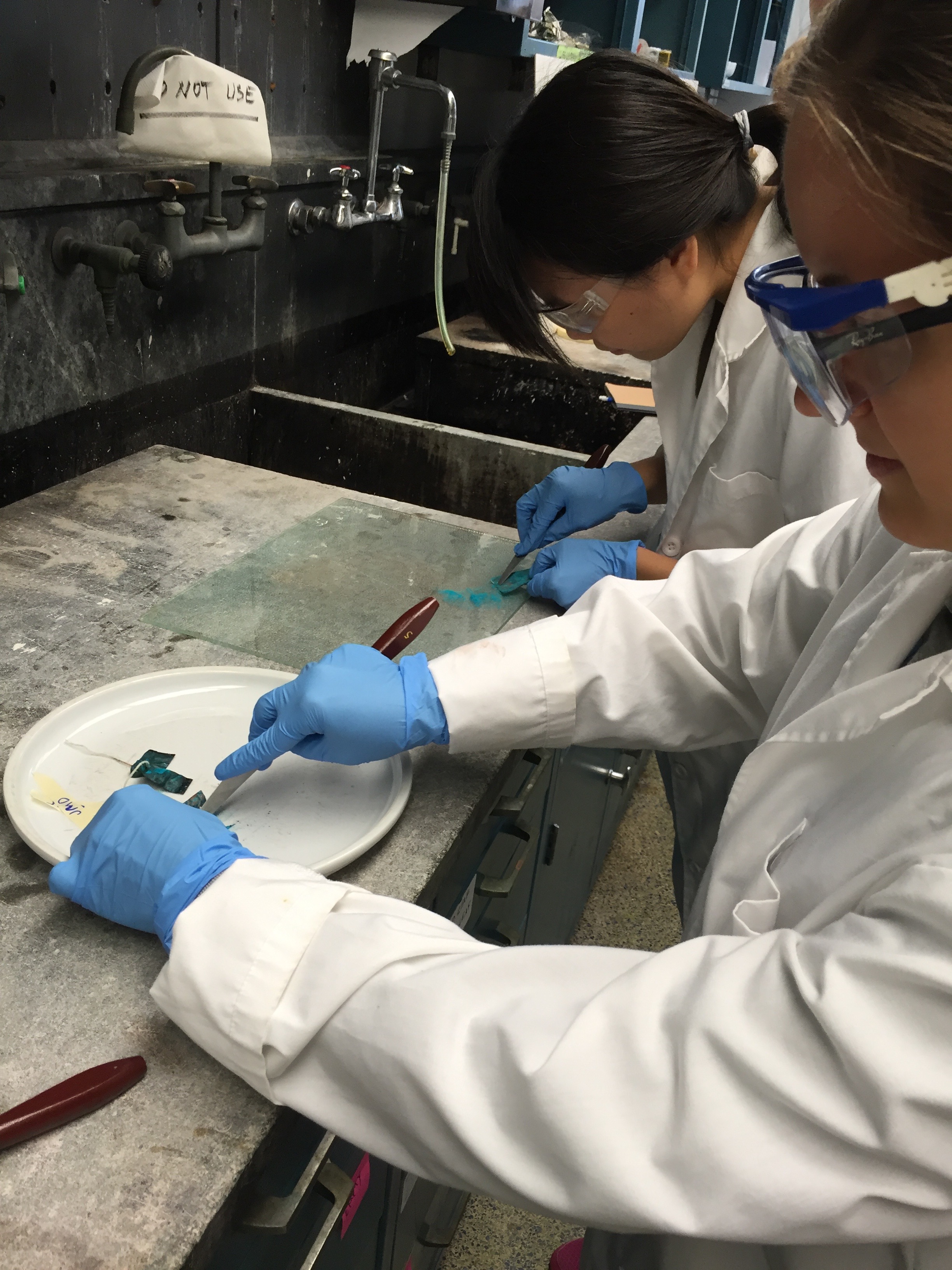
4
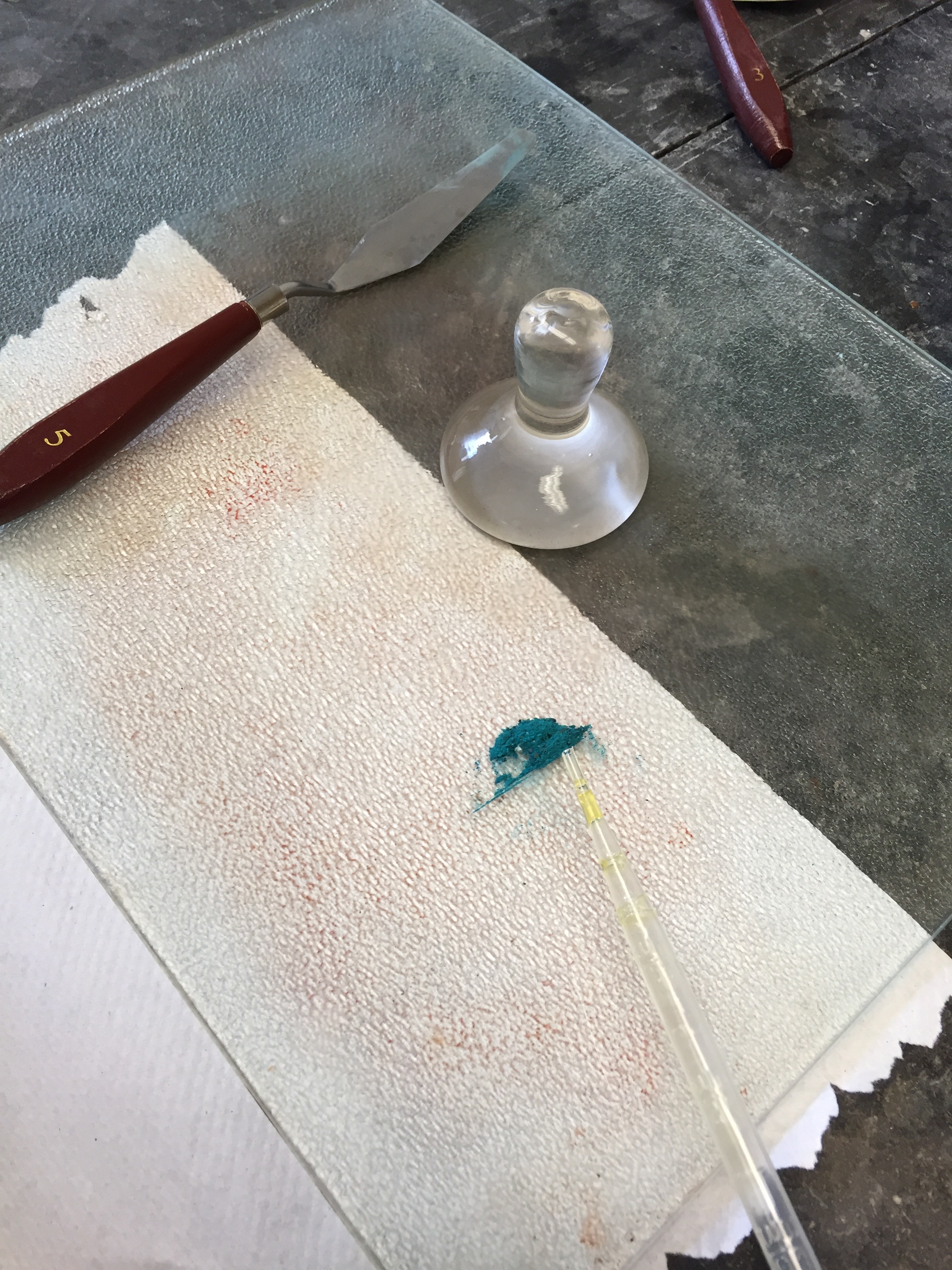 5
5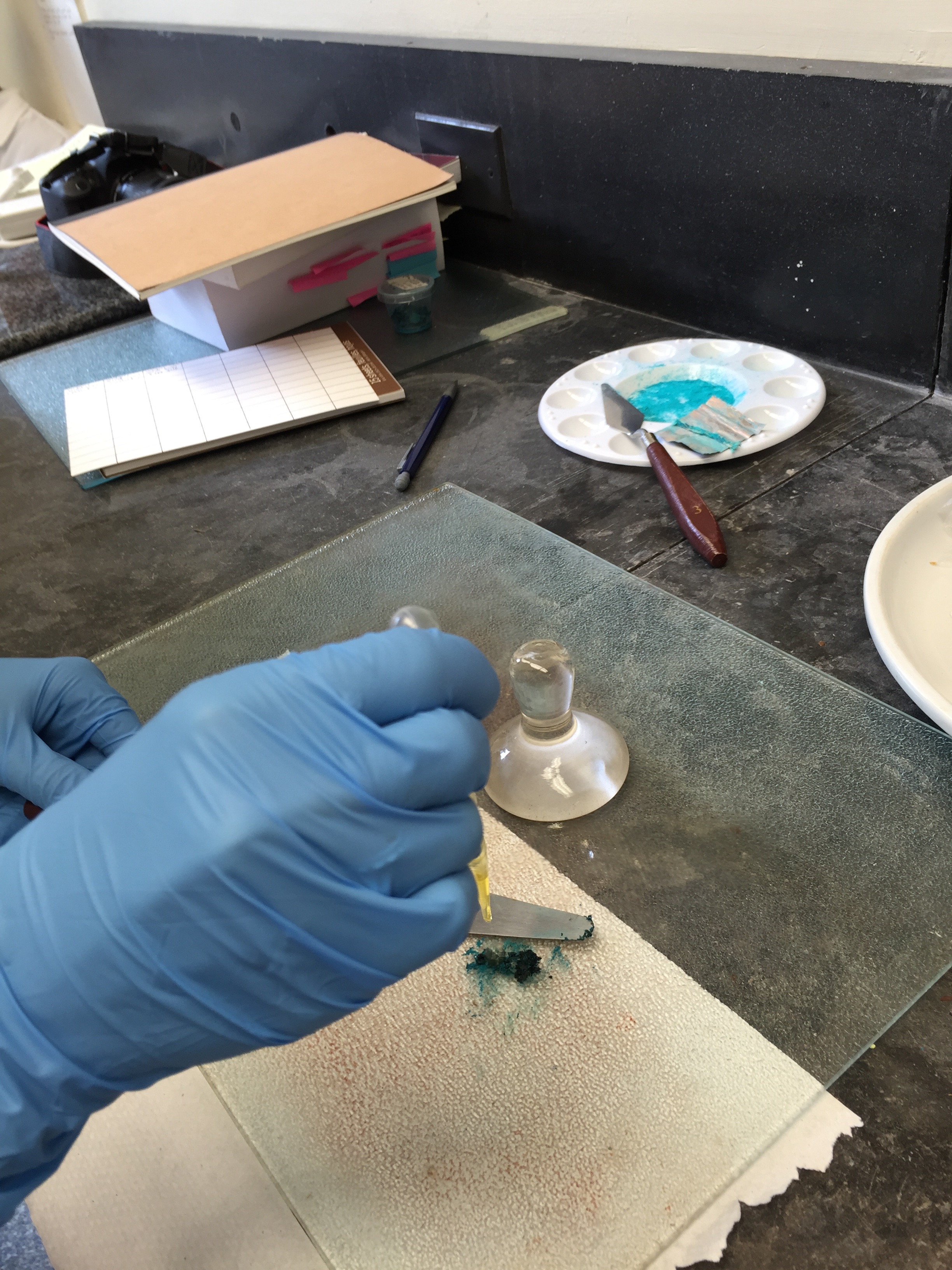 6
6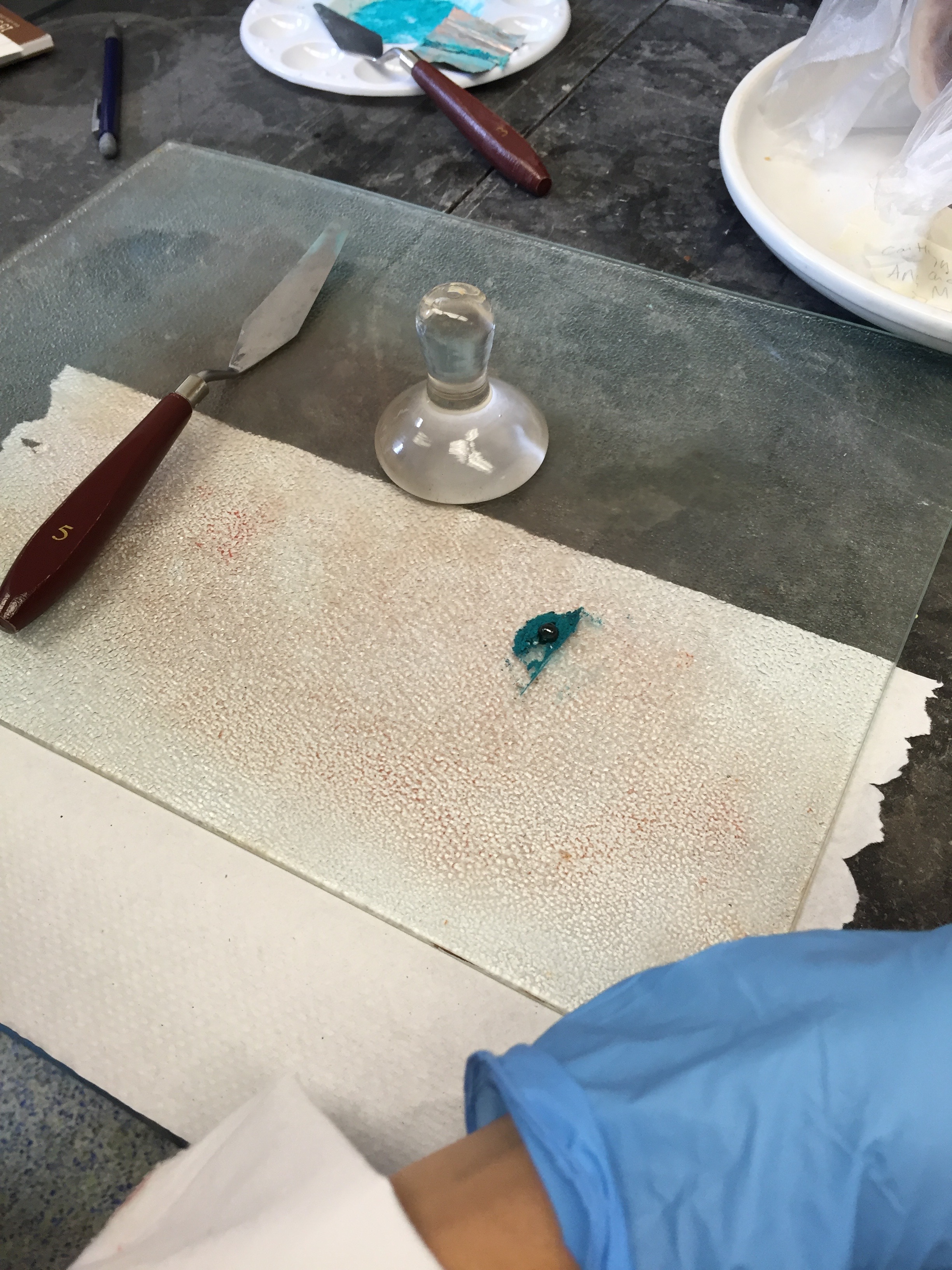
7
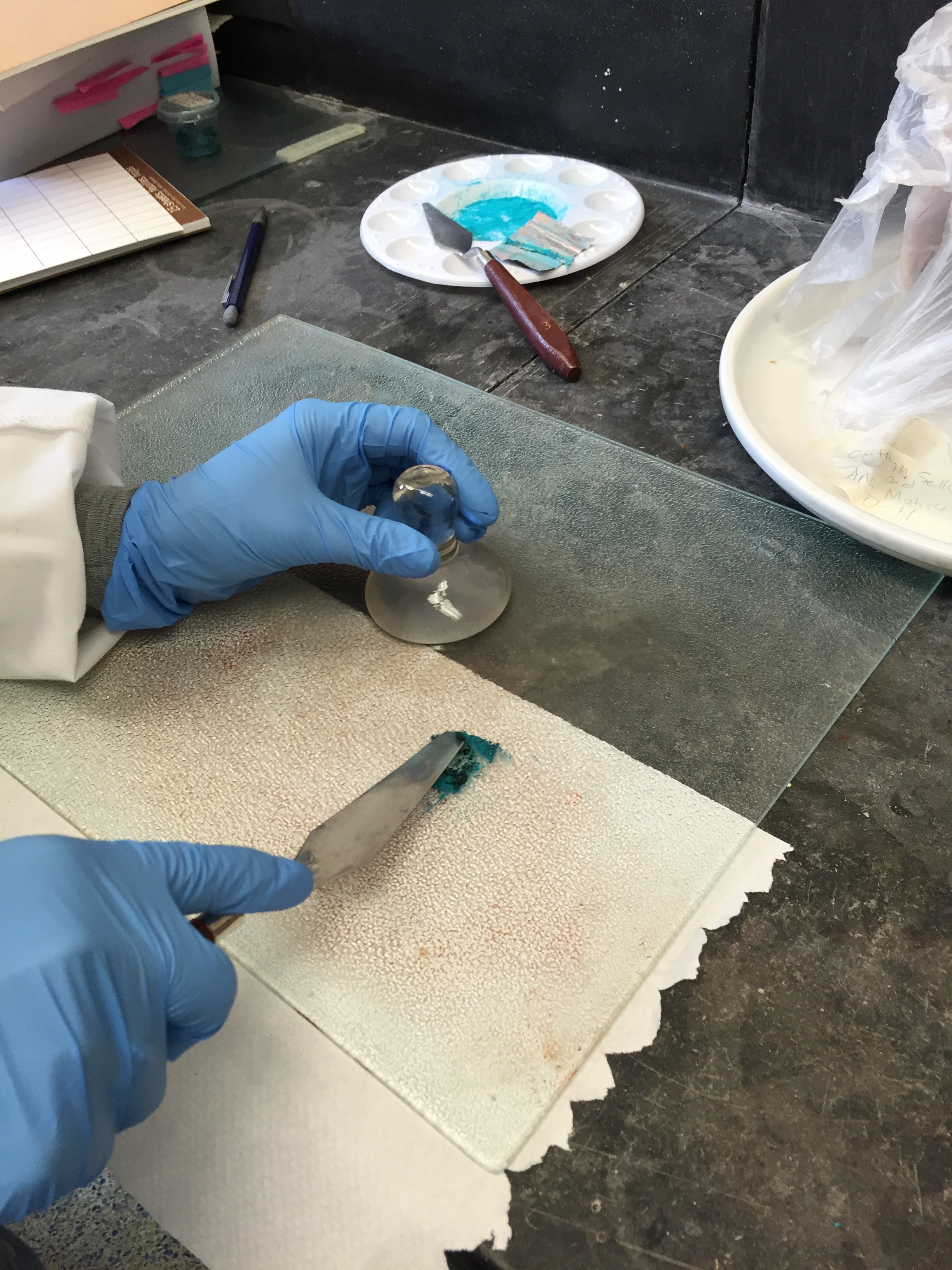 8
8 9
9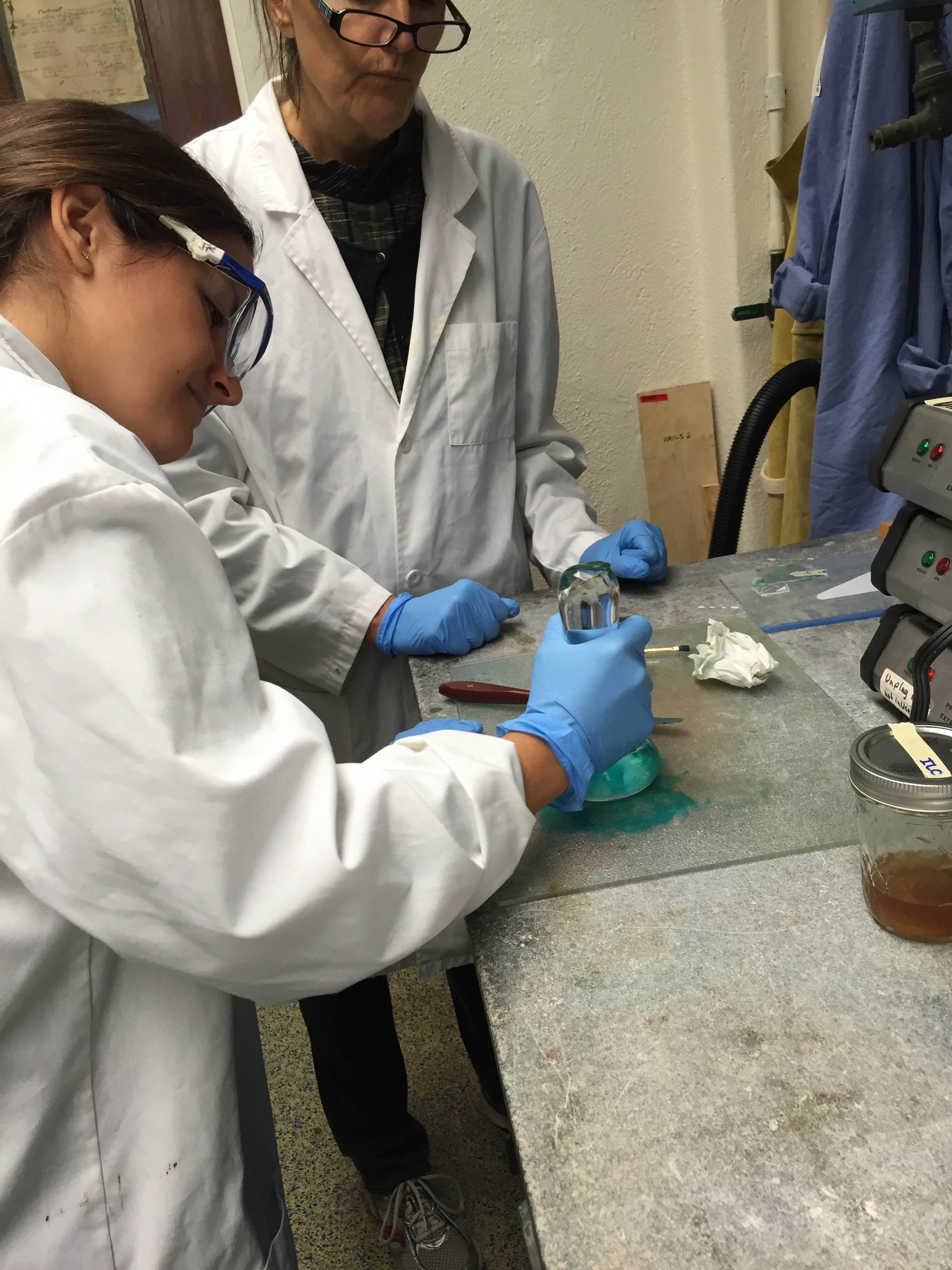
10
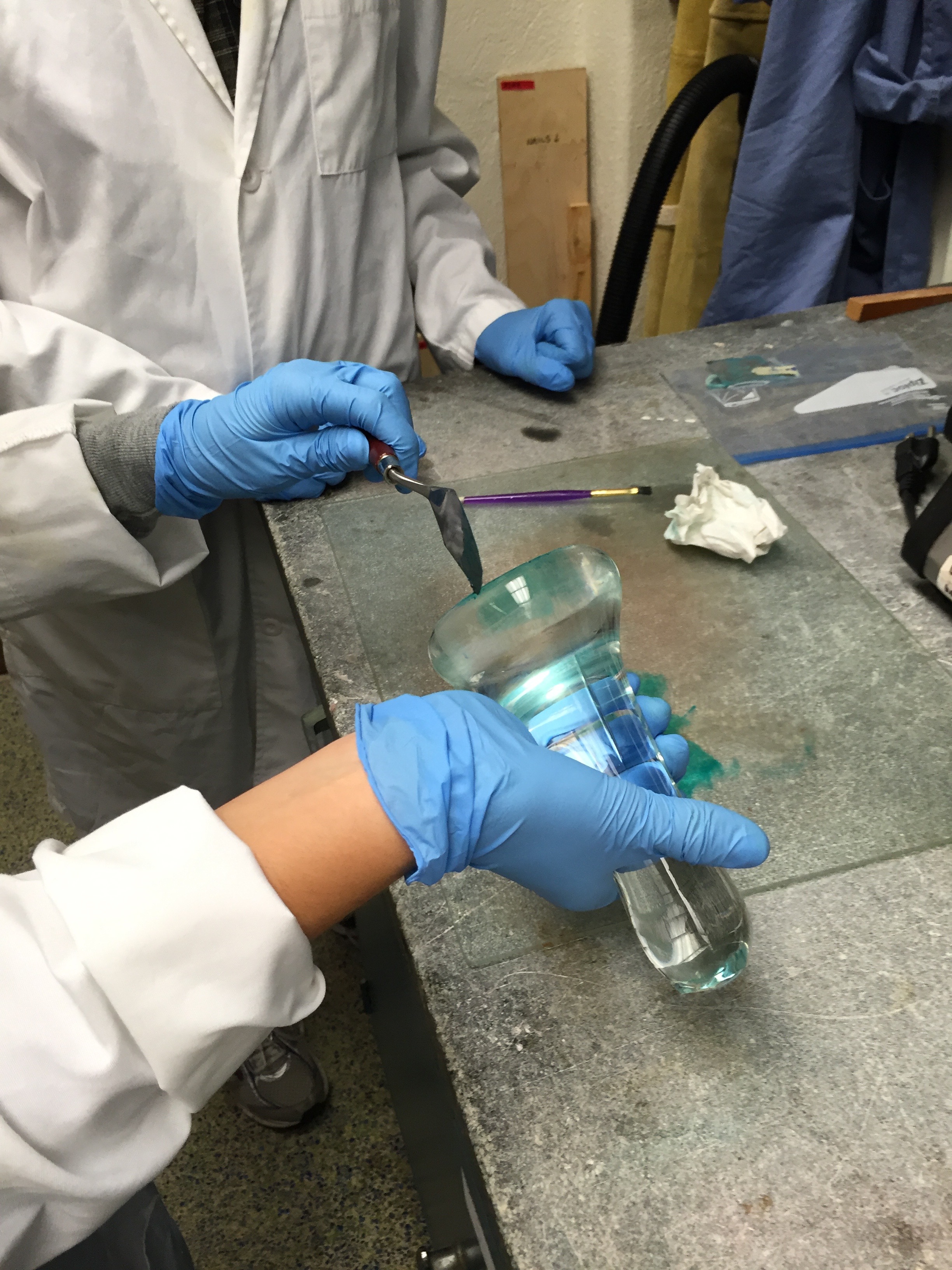 11
11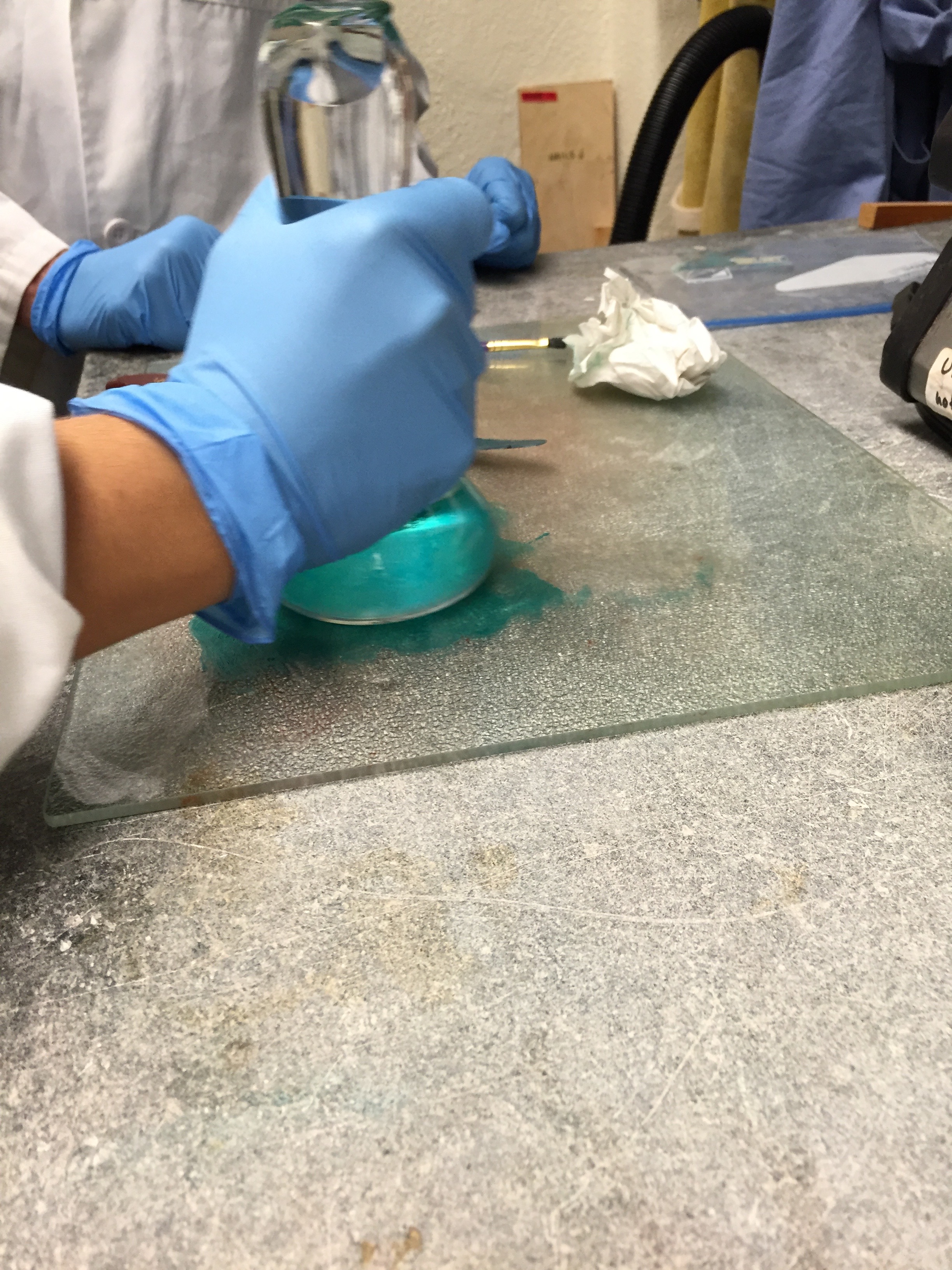 12
12
13
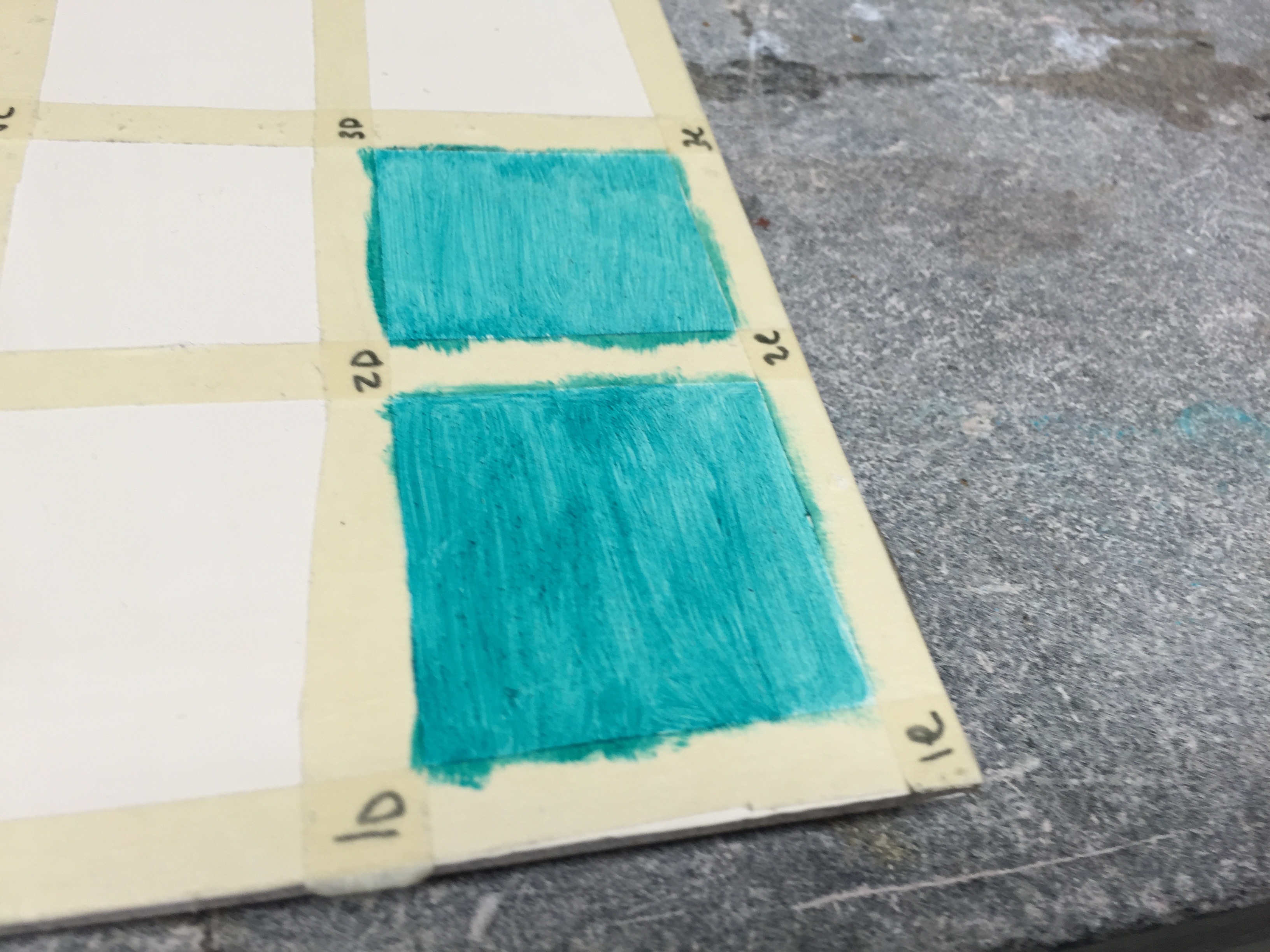
Verdigris--One week later
Name: Joslyn DeVinneyDate and Time:
2016.10.10, 12:00pm
Location: Making and Knowing Lab
Subject: painted verdigris after one week in lab

After one week sitting in lab, the verdigris has dried completely and turned greener.
Two weeks later
Name: Joslyn DeVinneyDate and Time:
2016.10.17, 2:00pm
Location: Making and Knowing Lab
Subject: painted verdigris after two weeks in lab

Three weeks later
Name: Joslyn DeVinneyDate and Time:
2016.10.24, 2:00pm
Location: Making and Knowing Lab
Subject: painted verdigris after three weeks in lab
